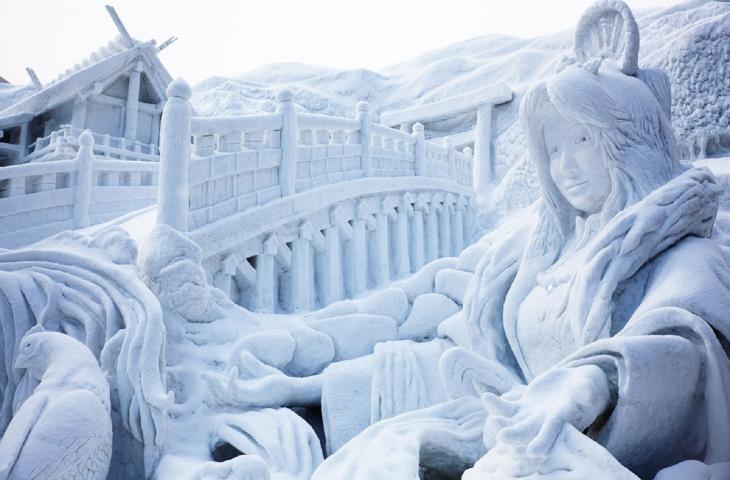SAPPORO (JP) – Established in February 1950, when a group of high school students, to escape the climate of post-war depression, set about constructing six snow sculptures, scenic enough to attract the attention of the local media. The Sapporo Snow Festival still takes place in the city centre, right in the heart of Odori Park, exactly where the students’ idea took off over sixty years ago. More than 38,000 tonnes of snow are collected from the surrounding mountains of the Hokkaidō Peninsula every winter for the realization of this most bizarre event, which perfectly fuses nature and design.
The immense ice sculptures
Hundreds and hundreds of immense sculptures, more than 25 metres wide and depicting a very wide range of subjects. Impertinent seals with a gaze that is more livid than frozen, slide along endearingly on their bellies, against a backdrop of palaces of sculptural transparency, large enough to accommodate whole families. And in the wake of the most imaginative fairy tale atmosphere, icy Walt Disney personalities, over thirty metres high, wink their infant eyes at the more adult and headstrong manga. There are robots, dinosaurs, famous singers like Michael Jackson, scenes from popular films and religious temples. Among the immense ice sculptures of the Sapporo Snow Festival the oddest combinations stand out. And so, while strolling among the stalls in search of noodles and hot steaming delicacies, it is possible to encounter so much; Huey, Dewey and Louie fleeing from Donald Uncle or the most serious and impeccable restatement in ice of Michelangelo’s Pietà. The Festival of Snow, a real virtual world of art and low temperatures.
Sapporo, a green city
Known for having hosted the Winter Olympics in 1972, Sapporo is also a very green city. Tree lined streets, macrobiotic cuisine like the Shojin Restaurant Yo, endless products to choose from at the Central Wholesale Market, stringent prohibitions on smoking in the main public places and many, many parks, including the Moerenuma Park, famous for having been built on land recovered from a waste treatment plant. No need to be astonished. The Japanese have always had an unrivalled talent for curating nature and the landscape











